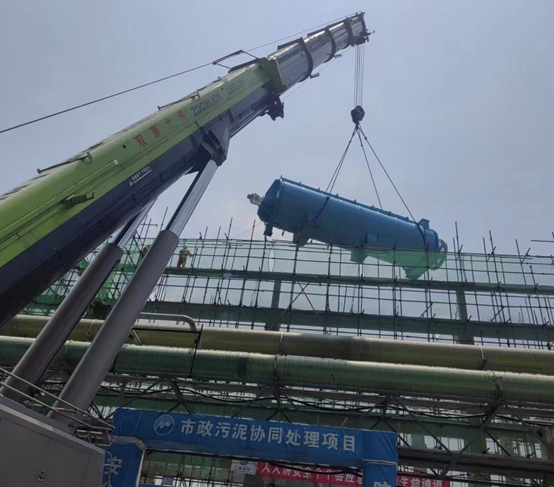

BLOG
Comprehensive Utilization of Sludge: A Magnificent Transformation from Waste to Resource
Comprehensive Utilization of Sludge: A Magnificent Transformation from Waste to Resource
27 May 2025
In the closed-loop chain of sewage treatment, sludge, as the final product, has long been regarded as a formidable environmental burden. Statistics show that the annual output of municipal sludge in China has exceeded 60 million tons (calculated at 80% moisture content), and the volume of industrial sludge is even more substantial. However, with the deepening of the concept of resource recycling and technological innovation, sludge is gradually shedding its label as "waste." It is reentering production and daily life in new guises such as energy sources, building materials, and soil conditioners, embarking on a journey from the end of pollution treatment to the forefront of resource utilization.
I. Characteristics and Resource Potential of Sludge
Sludge is not merely a pollutant; its complex composition harbors considerable resource value. Chemically, sludge is rich in nutrients essential for plant growth, such as nitrogen, phosphorus, and potassium. Its organic matter content typically ranges from 30% to 60%, comparable to traditional organic fertilizers. Additionally, it contains inorganic components like iron, aluminum, and calcium, which can serve as raw materials for building material production. Some industrial sludges even contain rare metals, making them extractable. Nevertheless, sludge's "double-edged sword" nature cannot be ignored: the presence of heavy metals (such as cadmium, mercury, lead), persistent organic pollutants (such as polycyclic aromatic hydrocarbons, dioxins), and pathogenic microorganisms means that improper disposal can turn it into a potential source of soil, water, and air pollution. Therefore, scientific treatment and comprehensive utilization are crucial keys to unlocking the resource potential of sludge.
II. Diverse Paths for the Comprehensive Utilization of Sludge
(I) Energy Utilization: Transforming Sludge into "Green Energy"
Biogas Production through Anaerobic Digestion: Through the decomposition of anaerobic microorganisms, the organic matter in sludge is converted into a mixed gas (biogas) composed of methane, carbon dioxide, etc., which can be used for power generation, heating, or purified into biomethane. Take a large-scale sewage treatment plant as an example. With a daily sludge treatment capacity of 200 tons, the anaerobic digestion process can produce over 10 million cubic meters of biogas annually, equivalent to reducing the consumption of more than 3,000 tons of standard coal.
Thermochemical Conversion: Technologies such as pyrolysis, gasification, and incineration of sludge can convert it into biochar, syngas, or thermal energy. Among them, sludge incineration for power generation has been applied in many regions. The heat generated is used for heating or power generation, and the ash can be used as a raw material for building materials, achieving the multiple goals of "reduction, harmless treatment, and resource utilization."
(II) Building Material Utilization: Constructing a New Circular Economy Chain
The inorganic components in sludge are similar in properties to raw materials for building materials such as clay and cement. After processes like dewatering, drying, and high-temperature treatment, it can be made into building materials products such as ceramsite, non-fired bricks, and cement additives. For example, non-fired bricks pressed from a mixture of sludge, fly ash, and cement have a compressive strength of over MU10, meeting the standards for building wall materials. Ceramsite made from sludge can be used in lightweight concrete, horticultural substrates, and other fields, effectively replacing natural sand and gravel resources.
(III) Land Utilization: Boosting Ecological Restoration and Agricultural Production
Sludge that has undergone stabilization and harmless treatment (such as composting, alkali treatment, high-temperature sterilization) can be applied to farmland, forest land, and garden greening as a soil conditioner or organic fertilizer. The organic matter in sludge can improve soil structure and enhance water and fertilizer retention capabilities, while nutrients such as nitrogen, phosphorus, and potassium can reduce the use of chemical fertilizers. However, strict control of heavy metal content is required for land utilization, and compliance with the Pollutant Control Standards for Sludge Used in Agriculture is essential to ensure environmental safety.
(IV) Other Innovative Applications
With technological advancements, the applications of sludge in new materials and high-value products are constantly emerging. For example, proteins in sludge can be extracted through nanotechnology to prepare biological flocculants; cellulose in sludge can be used to develop degradable packaging materials; heavy metals can be recovered from industrial sludge to achieve resource reuse.
III. Challenges and Countermeasures in the Comprehensive Utilization of Sludge
Despite the broad prospects of sludge comprehensive utilization, it still faces multiple challenges. At the technical level, the high energy consumption and treatment costs of sludge limit the market competitiveness of resource-based products. In terms of policies, there is insufficient coordination in cross-departmental supervision, and some regions tend to "prioritize water treatment over sludge treatment." Among the public, concerns about the safety of sludge products hinder market promotion.

To break through these bottlenecks, efforts should be made in three aspects: First, increase investment in research and development to drive sludge treatment technologies towards low energy consumption and low costs, such as developing efficient dehydrating agents and optimizing anaerobic digestion processes. Second, improve policies and regulations, establish a full-life cycle supervision system for sludge, and introduce subsidies and tax incentives for resource-based products. Third, strengthen science popularization and publicity. Demonstrate the safety and reliability of sludge products through demonstration projects to eliminate public concerns.
From pollution to resources, the comprehensive utilization of sludge is not only a technological innovation but also a vivid practice of the circular economy concept. With continuous technological progress and the improvement of the policy system, sludge is expected to completely shed its label as an "environmental burden" and become an important resource supporting green development, contributing to the realization of the "dual carbon" goals and ecological civilization construction.



